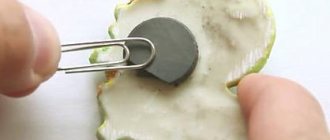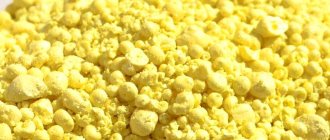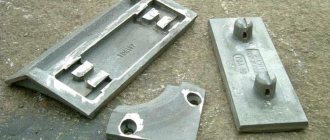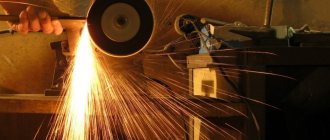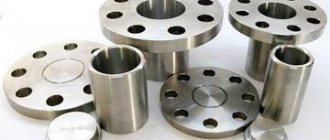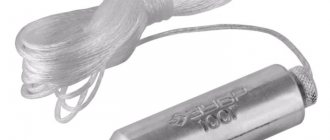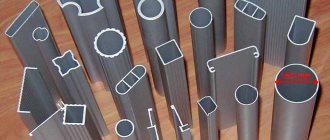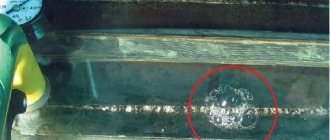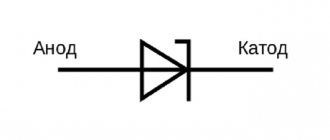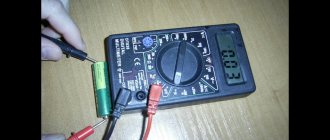Scientific point of view
To determine which metals are not magnetic, you need to find out how all metals in general can relate to magnets and a magnetic field. With respect to the applied magnetic field, all substances are divided into diamagnetic, paramagnetic and ferromagnetic.
Each atom consists of a positively charged nucleus and negatively charged electrons. They move continuously, which creates a magnetic field. The magnetic fields of electrons in one atom can enhance or cancel each other, depending on the direction of their movement. Moreover, the following can be compensated:
- Magnetic moments caused by the movement of electrons relative to the nucleus are orbital.
- Magnetic moments caused by the rotation of electrons around their axis are spin moments.
If all magnetic moments are equal to zero, the substance is classified as diamagnetic. If only spin moments are compensated - to paramagnets. If the fields are not compensated, use ferromagnets.
What is a magnet and how does it work?
A magnet is a body that has its own magnetic field. There are several types of magnets:
- Permanent - products that, after a single magnetization, retain this property. Magnets are divided into several subtypes depending on strength and other parameters.
- Temporary - they function on the principle of permanent ones, but only when they are located in a strong magnetic field. For example, products made from so-called soft iron (nails, paper clips, etc.).
- Electromagnets are wires tightly wound around a frame. As a rule, such a device is equipped with an iron core. It works only if electric current passes through the wire.
A permanent magnet is the most familiar and widespread. For its manufacture, the following combinations of materials are most often used:
- neodymium-iron-boron;
- alnico or UNDC alloy (iron, aluminum, nickel, cobalt);
- samarium cobalt;
- ferrites (compounds of iron oxides and other ferrimagnetic metals).
Magnetism Any magnet has a south and north pole. Like poles repel, and opposite poles attract.
Interesting fact : magnets are often made in the shape of a horseshoe. This is done to ensure that the poles are located as close to each other as possible. This creates a strong magnetic field that can attract larger pieces of metal.
How to demagnetize metal at home
Craftsmen when working with various metals are faced with a problem - magnetization of tools. In some jobs, magnetic properties help with actions, for example, with a magnetic screwdriver you can install a screw in a hard-to-reach place. The build-up of metal shavings when using a caliper, file or drill can interfere with marking or a straight cut line.
The main reasons for metal magnetization
Magnets are media that create their own magnetic field. Main groups of magnets:
- paramagnetic materials;
- ferromagnets;
- Diamagnets.
Steel products based on alloys of iron, cobalt or nickel refer to substances whose own magnetic field is higher than the external one, i.e. to ferromagnets. The magnetization of a substance is considered to be the sum of the magnetic properties of particles per unit volume.
At the moment the Curie temperature threshold is reached, spontaneous domains with magnetization are formed, which spread until they are completely filled. Under normal conditions, it is possible to obtain a magnetized tool when working close to electric motors, magnetrons and other elements. The metal takes away the properties of magnetism from a nearby emitter, thereby becoming magnetized.
Working with small parts with a magnetized tool can cause a lot of trouble. Sharpening metals with increased magnetism properties is impossible to ideal sizes, because... the material is covered with shavings.
Using a demagnetization device
The demagnetization device comes in three variations. The basic elements can be selected at home, using simple methods that do not require much effort to manufacture. There are special devices that can both demagnetize and magnetize an element.
Magnetometer
Magnetometers are used in the following sequence:
- The magnetic field strength of the instrument is an important parameter that needs to be determined, because it is possible to get a negative result;
- the same parameter must be found on a magnet of the opposite sign;
- touching the tool to the area of the device will demagnetize it.
The process takes place within 10 seconds; at home, no connection to the electrical network is required. The functionality is checked as follows: the self-tapping screw is brought to the magnetized metal, and the level of magnetization is checked. Afterwards the demagnetization process occurs and is checked again.
Ferromagnetic properties of metals
Paramagnets and ferromagnets
Let's consider the option when each atom of a substance has its own magnetic field. These fields are multidirectional and compensate each other. If you place a magnet next to such a substance, the fields will be oriented in one direction. The substance will have a magnetic field, a positive and a negative pole.
Then the substance will be attracted to the magnet and can itself become magnetized, that is, it will attract other metal objects. For example, you can magnetize steel clips at home. Each one will have a negative and a positive pole, and you can even hang a whole chain of paper clips on a magnet.
Such substances are called paramagnetic.
Ferromagnets are a small group of substances that are attracted to magnets and are easily magnetized even in a weak field.
Ferromagnetic metals
Ferromagnetic metals are strongly attracted to objects with magnetic fields and can retain their magnetic properties after the magnet is removed from them. They are used to create permanent magnets. The main ferromagnetic metals are iron, nickel, cobalt, gadolinium and dysprosium. If you hold a piece of ferromagnetic metal next to a magnet, you will feel a fairly strong attraction.
Ferromagnetic alloys
Ferromagnetic alloys are materials, such as steel, that contain ferromagnetic metals. Steel is a combination of iron and several other metals and is harder than iron. Because of this hardness, steel can retain its magnetism longer than iron. When heated to high temperatures, steel loses its magnetic properties. This will also happen with ferromagnetic metals such as nickel.
Ferrimagnetic materials
Ferrimagnetic materials are ferrites, magnetite and magnesium. They all have iron oxides as the main component, as well as oxides of other metals. People first discovered magnetism using lodstnons. Lodestone is a magnetite that is naturally magnetized. Magnetite is attracted to magnetic fields, but is usually not magnetized itself. Ferrimagnetic materials are similar to ferromagnetic materials, but with lower magnetic attraction.
Paramagnetic metals
Paramagnetic metals are weakly attracted to a magnet and do not retain magnetic properties when moving away from the magnet. These include copper, aluminum and platinum. The magnetic properties of paramagnetic metals depend on temperature, and aluminum, uranium and platinum become more attractive to magnetic fields when they are very cold. Paramagnetic substances have much lower attractive forces on magnets than ferromagnetic materials, and highly sensitive instruments are needed to measure magnetic attraction.
RareEarthMetal
Babbitt
Babbitt is a tin or lead based anti-friction alloy intended for use as a layer poured or sprayed onto the bearing shell housing.
Copper additions further increase the hardness of tin babbits.
Lead-calcium babbit is used in bearings for railway rolling stock.
Babbitt B83 comes only in GOST ingots with the B-83 terminal knocked out.
If the lead content is more than 0.35%, then it is closed as B-80.
Babbitt B-50 (Sn 49-78% rest lead)
Babbitt B-16 (Sn 15-48%, Sb 15-17%, Cu 1.5-2% rest lead)
Babbitt BN (Sn 10-15%, Sb -10%, rest Pb)
Tungsten
Tungsten (W) is a shiny light gray metal, having the highest proven melting and boiling points, is one of the heaviest, hardest and most refractory metals, is easily forged and can be drawn into a thin thread. It is found in the form of wire, tape, furnace screens and other parts. In its purified form, tungsten is silvery-white and resembles steel or platinum in appearance. (not magnetic, has a yellow spark, may be radioactive)
Tungsten – chemical composition W-99%
Tungsten VN (W from 85%, Ni no more than 10%)
Tungsten VND (W from 85%, Ni no more than 10%, Cu no more than 5%)
Tungsten residence permit (W from 85%, Ni no more than 10%, Fe no more than 3%)
VK TK (hard alloys) are hard and wear-resistant metal materials that can maintain these properties at 900–1150 °C. They are mainly made from highly hard and refractory materials based on tungsten, titanium, tantalum, chromium carbides, bound with a cobalt metal binder, with varying cobalt or nickel content. VK TK (checked with a grinder) short yellow spark, VK TK magnetite with copper-brass surfacing, yellow.
Magnets
UNDK magnets are an alloy of iron (53%), aluminum (10%), nickel (19%) and cobalt (from 18%). Foreign analogues are called alnico (English Alnico) - an acronym for the elements included in the composition. The alloy has high residual magnetization and is used for the manufacture of permanent magnets. Alnico is produced by casting, from powders and by hot deformation of an ingot. Alnico has high corrosion resistance, a high Br value (magnetic field strength) and stability at high temperatures (up to 550 °C). The material has a coarse-grained structure, pressed into various shapes (disc, semicircle, etc.)
Molybdenum
Molybdenum (Mo) is extracted from ores containing up to 50% of the substance itself, about 30% sulfur, 9% silicon and a slight presence of other elements. In fact, the ore is used as a concentrate that is roasted. The temperature of this stage is 570 - 600 0C, it takes place in special ovens. The result is a cinder containing molybdenum oxide contaminated with impurities. Molybdenum is added to steel along with a number of other elements. The percentage determines the type of product obtained: alloy (0.1 - 0.3%) or tool (3 - 10%) steel. It is this that is subsequently used when steel is alloyed. This direction remains the main one in the use of metal. Only 30% of mined molybdenum finds its way into industry as a pure metal or alloy, where it retains its primary importance. It is used in the production of nuclear reactors and spaceship skins.
High speed steels
High-speed steels (P9, P18, P6M5, P6M3, P3M3) are alloy steels intended primarily for the manufacture of metal-cutting tools operating at high cutting speeds. Alloying high-speed steels with tungsten, molybdenum, vanadium and cobalt ensures hot hardness and red-hardness of the steel. The number after the letter “P” indicates the average tungsten content in it (as a percentage of the total mass). Then the content of molybdenum, vanadium and cobalt is indicated after the letters M, F and K. Foreign-made high-speed steel tools are usually marked with the abbreviation HSS. The material has a short red spark, which can be easily distinguished from ferrous metal by passing it with a grinder. When using drills, pay attention to the ends of the drills; most often they are made of iron (additional blockage).
Nickel
Nickel (Ni) is a silver-colored metal, often coated with a greenish oxide film that prevents further oxidation. Pure nickel is a magnetite like ferrous metal, a hard metal, but, nevertheless, it is very plastic, easy to forge, and all types of drawing. Cathode nickel has an uneven rough surface; it is used in electroplating; a short red spark is visible on the grinder.
Anodic nickel, smooth in contrast to the cathode, has the same properties.
Copper
Copper (phosphorous) (Cu) is widely used in metallurgy and mechanical engineering.
There are four main areas of their application:
- as a deoxidizer when melting copper and brass, as well as a number of other copper alloys; when smelting copper from cathodes at non-ferrous metal processing plants, the alloy is introduced into the melt at the rate of 0.10-0.15% P;
- as an alloying element in the production of phosphorus-containing copper alloys, the most important of which are deformable tin-phosphorous bronzes of type BrOF 6.5-0.15, casting bronzes containing up to 1% P; wrought bronzes containing up to 0.4%
- as the main component of solders with phosphorus content from 3 to 10%; As solders, both the MF10 type alloy itself and specially developed alloys PMFOTsr and PMFTCZh containing 3-4 wt. are used. %R; The main consumer of solders is mechanical engineering, including the production of household appliances.
Precision alloys
Precision alloys are those alloys that are characterized by special physical properties. properties (electrical, magnetic, thermal, elastic). Their level is largely dictated by the accuracy of the chemical composition, structure, and the absence of harmful impurities. Most often they are made on the basis of nickel, iron, copper, cobalt, niobium, etc. Precision alloys have a very wide range of properties. For example, it may be necessary that they exhibit an extremely small change in physical value. parameters when changing temperature, magnetic or electric fields, loads (we get invar, elinvar, constantan, perminvar). Sometimes it is necessary, on the contrary, to obtain a significant change in physical strength. parameters when conditions change (we get permalloy, alumel, chromel, spring alloys, thermobimetals, etc.).
Copper-nickel alloy
Copper-nickel alloy - alloys based on copper and containing nickel as the main alloying element. As a result of mixing copper and nickel, the resulting alloy has increased resistance to corrosion, and electrical resistance and strength increase. There are two types of copper-nickel alloys: electrical and structural. Structural alloys include nickel silver and cupronickel. Electrical products include Copel and Constantan
Titanium
Titanium (Ti) is a non-ferrous metal with a silvery-white color that resembles steel in appearance. High anti-corrosion properties and the ability to withstand most aggressive environments make this metal indispensable for the chemical industry. Pipelines, containers, shut-off valves, and filters used in the distillation and transportation of acids and other chemically active substances are made from titanium (its alloys). It is in demand when creating devices operating at elevated temperatures. (bright white spark)
Tin
Tin (Sn) is a ductile, malleable and fusible shiny metal of a silvery-white color. It is used mainly as a safe, non-toxic, corrosion-resistant coating in its pure form or in alloys with other metals. The main industrial uses of tin are in tinplate (tinned iron) for making containers, in solders for electronics, in household piping, in bearing alloys, and in coatings of tin and its alloys. Pure tin has low mechanical strength at room temperature (you can bend a tin rod and hear a characteristic cracking sound caused by the friction of individual crystals against each other).
Solders are used in electrical engineering for soldering pipelines. Such alloys can contain up to 97% tin, copper and antimony, which increase the hardness and strength of the alloy.
Antimony
Antimony (Sb) is an element that is extracted from ores. Antimony ores are mineral formations containing antimony in such quantities that, when extracting pure metal, the maximum economic and industrial effect is obtained. In its pure form, antimony is considered one of the most brittle metals, but when alloyed with other metals, it increases their hardness and the oxidation process does not occur under normal conditions. These advantages have been deservedly appreciated in the industrial sphere, and now antimony is added to many alloys. It does not magnetize or spark, has a coarse-grained structure and is easy to chip.
Bismuth
Bismuth (Bi) is a silvery-white metal that shimmers in various shades. Pure bismuth has a predominantly pink cast. A metal in which some other color is dominant is an allotrope. Bismuth is the most diamagnetic metal in existence. Its magnetic susceptibility is 1.34·10−9 at 293 K. And this quality, in the presence of bismuth, can be seen with the naked eye. If you hang a sample of metal on a thread and hold a magnet close to it, it will noticeably deviate from it. Bismuth is valued for its fusibility; models are made from it for casting complex parts, since bismuth has enhanced casting properties and can fill the smallest details of a mold. It is poured into metallographic sections and used in prosthetics.
Alloy Rose
Rose's alloy is named after the German chemist Valentin Rose the Elder. Alloy composition: tin (25%), lead (25%), bismuth (50%). Wood's alloy contains (12.5%) Cadmium, which makes it much more toxic. They are small granules or rods of silver color. The melting point of Rose's alloy is about +94..+96 °C (Wood's alloy +68.5 °C), which allows them to melt and remain in a liquid state in boiling water, used for soldering and improving the technical qualities of parts in devices. These pieces of metal are used to join aluminum, copper, silver, brass, nickel and tin into circuit boards and jewelry.
Zinc
Zinc is extracted from polymetallic ores containing 1-4% Zn in the form of sulfide; it is not found in nature as a native metal; it is used for the reduction of noble metals. All grades of zinc, except grade TsV00, are produced in the form of pigs weighing 19 - 25 kg and blocks weighing 500, 1000 kg. Color marking of ingots and blocks (TsO - one white stripe, Ts1 - one green stripe)
Ferrovanadium
Ferrovanadium is a ferroalloy containing from 35 to 80% V. It is obtained by reducing vanadium oxides with carbon, silicon or aluminum. The main raw material for the production of ferrovanadium is vanadium pentoxide, obtained from vanadium ore concentrates or from iron ores with a high vanadium content. Then this cast iron is processed in steel furnaces (open hearth, converter) with the oxidation of vanadium and the enrichment of the resulting slag with vanadium oxides.
Ferromolybdenum
Ferromolybdenum is a ferroalloy containing 50-60% molybdenum, used instead of pure molybdenum when alloying steel, cast iron and alloys. Adding molybdenum to cast iron increases its strength and wear resistance.
Nichrome
Nichrome is the general name for a group of alloys consisting, depending on the brand of the alloy, of 55-78% nickel, 15-23% chromium, with additions of manganese, silicon, iron, and aluminum. Nichrome has high heat resistance in an oxidizing atmosphere (up to 1250 °C), high electrical resistivity (1.05-1.4 Ohm mm?/m), and has a minimum temperature coefficient of electrical resistance. It has increased heat resistance, creep resistance, ductility, and holds its shape well.
Nichrome is an expensive alloy, but given its durability and reliability, the price does not seem excessive.
Diamagnets
In diamagnetic materials, the magnetic fields inside each atom are compensated. In this case, when a substance is introduced into a magnetic field, the movement of electrons under the influence of the field will be added to the natural movement of electrons. This movement of electrons will cause an additional current, the magnetic field of which will be directed against the external field. Therefore, the diamagnetic material will be weakly repelled from the nearby magnet.
So, if we approach the question from a scientific point of view, which metals are not magnetic, the answer will be – diamagnetic.
Distribution of paramagnets and diamagnets in the periodic table of Mendeleev elements
The magnetic properties of simple substances change periodically with increasing atomic number of the element.
Substances that are not attracted to magnets (diamagnets) are located mainly in short periods - 1, 2, 3. Which metals are not magnetic? These are lithium and beryllium, and sodium, magnesium and aluminum are already classified as paramagnetic.
Substances that are attracted to magnets (paramagnets) are located mainly in the long periods of the Mendeleev periodic system - 4, 5, 6, 7.
However, the last 8 elements in each long period are also diamagnetic.
In addition, three elements are distinguished - carbon, oxygen and tin, the magnetic properties of which are different for different allotropic modifications.
In addition, there are 25 more chemical elements whose magnetic properties could not be established due to their radioactivity and rapid decay or the complexity of synthesis.
The magnetic properties of lanthanides and actinides (all of which are metals) change irregularly. Among them there are para- and diamagnetic materials.
There are special magnetically ordered substances - chromium, manganese, iron, cobalt, nickel, the properties of which change irregularly.
Paramagnets and ferromagnets
Let's consider the option when each atom of a substance has its own magnetic field. These fields are multidirectional and compensate each other. If you place a magnet next to such a substance, the fields will be oriented in one direction. The substance will have a magnetic field, a positive and a negative pole. Then the substance will be attracted to the magnet and can itself become magnetized, that is, it will attract other metal objects. For example, you can magnetize steel clips at home. Each one will have a negative and a positive pole, and you can even hang a whole chain of paper clips on a magnet. Such substances are called paramagnetic.
Ferromagnets are a small group of substances that are attracted to magnets and are easily magnetized even in a weak field.
How to identify metal: types of tests, use of chemistry
Probably everyone had to hold in their hands a piece of jewelry or another object, obviously metal.
But how can you determine what metal is used in production? It could be a precious material or a counterfeit, or even a trinket with no claims to value. Expertise from specialists will give you the exact answer, but it is not free.
But there are methods for approximately determining the type of metal at home. They were used a long time ago, but they have not lost their relevance in our time.
Magnet check
Bringing a magnet close to the item being tested is a good way to perform initial testing. By the reaction of the magnet you can determine which group the metal belongs to:
- Ferromagnets. The magnet is clearly attracted to the object, which means that the product may contain iron, steel or nickel.
- Paramagnetic materials. The interaction with the magnet is very weak. This group includes aluminum and chrome. Precious metals that are paramagnetic are platinum, palladium and silver.
- Diamagnets. In general, they do not react to magnets. Copper and zinc have these properties. Precious metals - gold.
Of course, such a check will not allow us to accurately determine the material from which the item is made. After all, a non-magnetic metal may not be in its pure form, but in the form of an alloy with a ferromagnet. But it can confirm or refute the assumption. For example, if it is checked whether it is gold or not, but the item is clearly magnetic, then it can be argued that it is a fake.
When checking jewelry, you should take into account that, in addition to precious metals, they may contain clasps, built-in springs, made of another material. You need to check the metal itself.
Heat check
You can also determine the group of a metal by how it conducts heat. It is known that the thermal conductivity of silver is very high. It is almost five times higher than that of iron or platinum. Slightly worse for gold, copper and aluminum. Platinum transfers heat even weaker than iron.
If you immerse the metal in hot water for 15–20 seconds, then based on its temperature, determined by touch, you can draw some conclusions.
- Gold and silver objects will become as hot as the water in which they were dipped.
- During this time, platinum and items containing iron will become warm, but not hot.
In this way it is easy to distinguish platinum from silver. But it’s not possible to compare silver or aluminum alloy.
Iodine test
You can check the authenticity of the metal using an iodine solution purchased at a pharmacy. A drop of iodine is applied to the surface and left for several seconds. Iodine will not harm noble metals - gold, platinum, silver. If the color of a drop of iodine does not change, and after removing it with a napkin, no traces or stains remain, this indicates the authenticity of the metal. If darkening is visible at the place of the drop, then this is a low-quality alloy or an outright fake.
Vinegar test
Household vinegar solution also does not affect precious metals. And it is dangerous for counterfeits. But, unlike the iodine test, acetic acid takes time. To wait for the result, you need to immerse the metal being tested in a container with vinegar for 15–30 minutes. The absence of traces of interaction between metal and vinegar is a sign of nobility.
If, in addition to metal, the product contains precious or semi-precious stones, then it is better not to check them this way; vinegar can ruin them. This is especially true for pearls.
Application of chemicals
Testing with active chemical reagents should be left as a last resort. If handled improperly, they will damage even genuine precious metal. And they can be dangerous for the health of the inspector.

